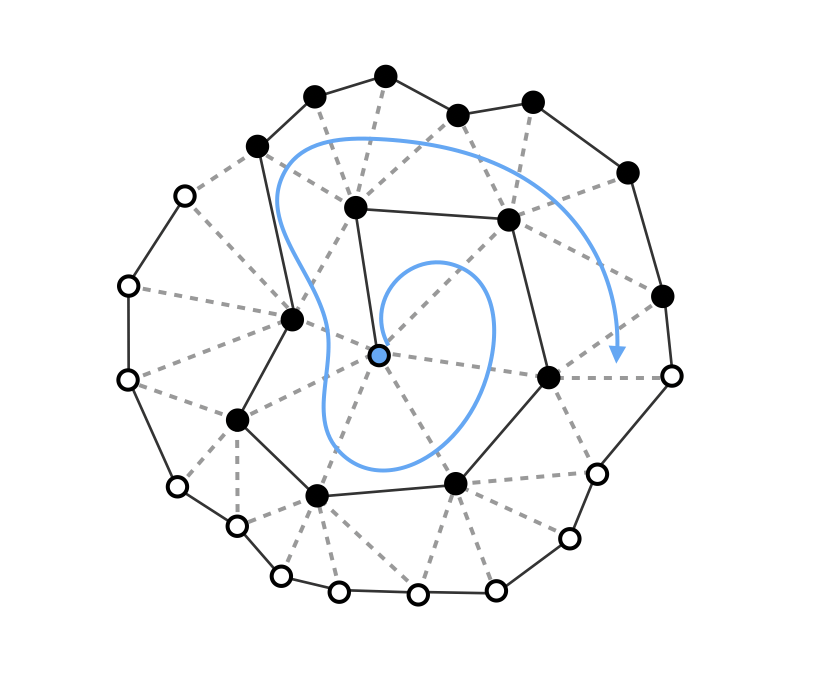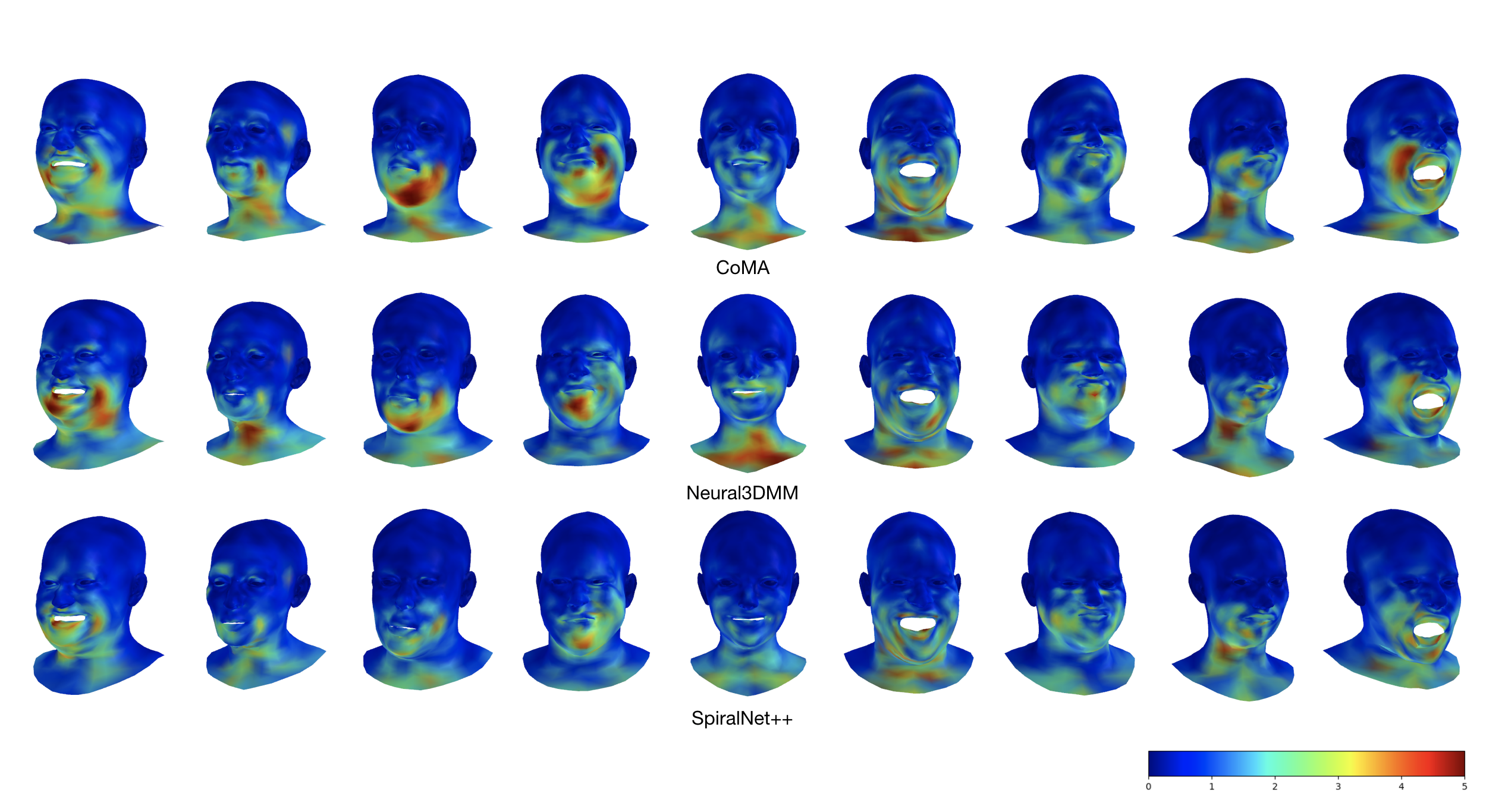SpiralNet++ is a general-purpose deep neural network for fixed 3D triangular meshes, which can be used for tasks such as 3D shape correspondence, classification or reconstruction. The basic idea is to serialize the neighboring vertices based on triangular meshes, which allows the model to learn intrinsic geometric features from fusing local geometric structure information with vertex features in a straightforward manner. Essentially, if you are working on a task based on fixed triangular meshes (which is normally the case in terms of mesh reconstruction problems, where you can simply pre-define mesh connectivities), you will be surprised by the speed and the power gain with this elgant mesh convolution operator.
Note that the dataset of 4DFAB used for evaluating classification performance in this paper has not yet been released. We will open source our code immediately once the dataset is publicly accessible. However, it should be easy to develop a shape classification model with our framework. Feel free to raise issues if you meet problems with applying SpiralNet++ to your problems.
SpiralConv is defined in an equivalent manner to the euclidean CNNs by utilizing the nature of the **fixed** spiral serialization of neighboring vertices. We define it as:where denotes MLPs and
is the concatenation operation. Note that we concatenate node features in the spiral sequence following the order defined in
.
To allow the model capture multi-scale resolution equivalently to the dilated CNNs in the Euclidean domain, the implementation of the dilated SpiralConv is straightforward without increased parameters as well as computational resources. You can customize the variable dilation to gain the power of the dilated spiral convolution.
In the experiments of facial expression classification and face reconstruction, we perform the in-network sampling operations on mesh with the precomputed sampling matrices introduced in this paper. The down-sampling matrix D is obtained from iteratively contracting vertex pairs that maintain surface error approximations using quadric matrics, and the up-sampling matrix U is obtained from including barycentric coordinates of the vertices that are discarded during the downsampling. It can be simply defined as:
where the sparse sampling matrix and node feature matrix
.
The real magic of our implemtation happens in the body of reconstruction.network.Pool. Here, we need to perform batch matrix multiplication on GPU w.r.t the sampling operation described above. Because dense matrix multiplication is really slow, we implement batch sparse dense matrix multiplication via scattering add node feature vectors corresponds to cluster nodes across a batch of input node feature matrices.
The code is developed using Python 3.6 on Ubuntu 16.04. The models were trained and tested with NVIDIA 2080 Ti.
- Pytorch (1.3.0)
- Pytorch Geometric (1.3.0)
- OpenMesh (1.1.3)
- MPI-IS Mesh: We suggest to install this library from the source.
- tqdm
python -m correspondence.main
To reproduce the experiment in our paper, you can simply run the script below. In our paper, we only show results of the Interpolation Experiments as described in the paper. However, you can also run experiments under the Extrapolation Experiment setting by defining the variable split of extrapolation or interpolation. Note that you need to set a test expression (test_exp) if performing extrapolation experiment.
python -m reconstruction.main
The checkpoints of each epoch is saved in the corresponding output folder (specifed by the vairable exp_name). After training, it outputs the result of the "Mean Error with the Standard Deviation" (in millimeters) as well as "Median Error", which are saved in the file euc_error.txt.
To create your own dataset, you have to provide data attributes at least:
data.x: Node feature matrix with shape[num_nodese, num_node_features]and typetorch.float.data.edge_index: Graph connectivity in COO format with shape[2, num_edges]and typetorch.long. Note that to use this framework, the graph connectivity across all the meshes should be the same.
where data is inherited from torch_geometric.data.Data. Have a look at the classes of datasets.FAUST and datasets.CoMA for an example.
Alternatively, you can simply create a regular python list holding torch_geometric.data.Data objects
Please cite our paper if you use this code in your own work:
@inproceedings{gong2019spiralnet++,
title={SpiralNet++: A Fast and Highly Efficient Mesh Convolution Operator},
author={Gong, Shunwang and Chen, Lei and Bronstein, Michael and Zafeiriou, Stefanos},
booktitle={Proceedings of the IEEE International Conference on Computer Vision Workshops},
pages={0--0},
year={2019}
}

